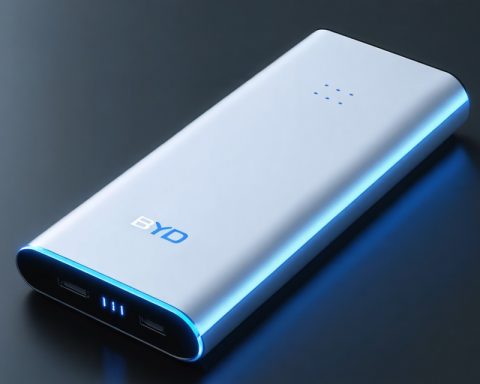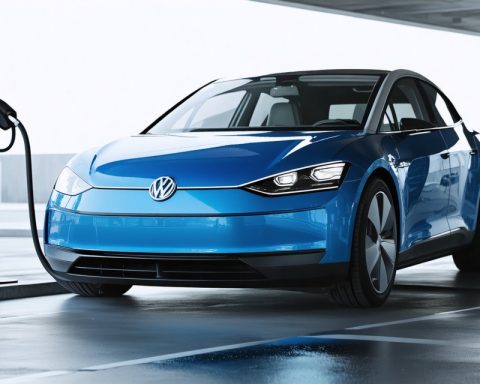- Porsche is adapting its strategy to address slow electric vehicle demand by 2029, affecting jobs and production.
- The Stuttgart factory will reduce its workforce by 1,900 due to decreased Taycan sales and broader economic challenges.
- Porsche plans to invest 800 million euros to expand its gasoline and hybrid vehicle lineup as electric sales falter.
- The company expects profit margins of 10%-12% this year, falling short of its long-term target of 20%.
- Negotiations with the IG Metall union focus on voluntary redundancies and early retirements to avoid mandatory layoffs until 2030.
- The situation reflects similar challenges at Audi, with both brands navigating declining automotive markets within the Volkswagen Group.
- Porsche’s strategic pivot underscores the enduring appeal and importance of adaptability in the automotive industry.
Porsche, the automaker known for its sleek design and innovation, faces a crossroads as it responds to sluggish electric vehicle demand with sweeping changes by 2029. The iconic Stuttgart-based factory, home to the all-electric Taycan, will soon see a workforce reduction of 1,900, attributing this shift to slow electric vehicle sales growth amid turbulent geopolitical and economic climates.
Last week, Porsche unveiled plans to enrich its lineup of gasoline and hybrid models, committing 800 million euros to this venture. This pivot, however, carries financial implications, with the brand anticipating a profit margin of just 10% to 12% this year—significantly shy of the 20% goal it holds dear long-term. The Taycan itself, once a bright electric innovator, sees a stunning 49% plummet in sales for 2024, forcing Porsche to respond by cutting production shifts at their flagship plant.
A delicate dance of negotiations ensues within the Volkswagen Group, as Porsche navigates the waters of voluntary redundancies and early retirements in line with IG Metall union agreements—curbing mandatory layoffs until 2030. By year’s end, 2,000 temporary contracts have already dissipated, with employees opting for early retirement options developed by HR head Andreas Haffner and works council leader Harald Buck.
This backdrop of challenges is mirrored by Audi, another crown jewel in the Volkswagen empire, grappling with declining markets. CEO Gernot Dollner, like a conductor orchestrating a critical symphony, engages with IG Metall to address potential staffing changes, though details remain closely guarded.
In this narrative of transformation, Porsche stakes a claim on the classic appeal of fuel-driven vehicles, daring to bend against the mainstream current of electrification. Ultimately, the journey reaffirms a crucial lesson: adaptability echoes power, even for the world’s driving champions.
Is Porsche’s Shift from Electric Vehicles a Bold Move or a Risky Gamble?
How-To Steps & Life Hacks: Navigating the Transition Back to Fuel-Driven Vehicles
1. Market Research: Understand your target demographic’s preferences and driving habits. Porsche’s pivot highlights the need to assess consumer demand meticulously.
2. Diversification Strategy: Like Porsche, balance your portfolio with a mix of electric, hybrid, and fuel vehicles tailored to varied market segments.
3. Cost Management: Manage costs effectively. Porsche’s decision to reduce production shifts and offer voluntary redundancies is a strategic move to curb expenses.
4. Invest in Innovation: Allocate funds for R&D to continuously improve internal combustion and hybrid technologies, keeping them competitive and efficient.
Real-World Use Cases: Porsche’s Strategic Moves
– Hybrid Technology: With decreased demand for fully electric vehicles, Porsche can tap into hybrid technology to offer eco-friendly options that retain the power and range consumers desire.
– Luxury Appeal: Preserve the brand’s luxury aura by offering high-performance internal combustion engines tailored to car enthusiasts.
Market Forecasts & Industry Trends
– Continued Demand for Internal Combustion Vehicles: Despite the EV push, a segment of the market remains loyal to fuel-driven cars. By 2030, hybrid vehicles are projected to see growth as they serve as a transitional solution.
– Regional Variations: Some markets, like the U.S., show slower EV adoption rates, suggesting that Porsche’s strategy could thrive where hybrid and gasoline engines remain popular.
Reviews & Comparisons
– Porsche vs. Tesla: While Tesla leads in the EV domain, Porsche differentiates with heritage performance vehicles and luxurious driving experiences.
– Porsche vs. Traditional Automakers: Offers a blend of tradition and innovation, unlike automakers sticking solely to future-oriented EVs.
Controversies & Limitations
– Environmental Concerns: Critics argue that returning to gasoline may undermine green initiatives. However, Porsche can counter this by advancing hybrid and cleaner technologies.
– Profit Margins: The projected 10% to 12% profit margins indicate financial strain, compared to their long-term goal of 20%.
Features, Specs & Pricing
– Upcoming Models: Expect a lineup enriched with both hybrid and gasoline variations, likely priced at premium levels but emphasizing performance and luxury.
Security & Sustainability
– Sustainability Initiatives: Porsche should innovate in sustainable fuel technologies and carbon offsetting programs to balance environmental concerns.
– Workforce Strategy: By honoring IG Metall agreements, Porsche maintains a stable workforce transition without sudden layoffs, ensuring long-term loyalty.
Insights & Predictions
– Short-Term Adjustment, Long-Term Gains: Analysts predict the shift may position Porsche well within certain markets resistant to rapid EV changes.
– Evolving Consumer Preferences: Monitor shifts, as younger consumers may still push back for greener models.
Tutorials & Compatibility
– Hybrid Vehicles Training: Investment in consumer education for transitioning to hybrid models can enhance user satisfaction and adoption.
Pros & Cons Overview
Pros:
– Flexibility to meet varied consumer demands.
– Potentially stronger short-term market presence.
Cons:
– May appear regressive in the face of global electrification trends.
– Profit margins could remain lower than desired.
Actionable Recommendations & Quick Tips
– Diversified Investments: Allocate resources across both electric and fuel-driven initiatives.
– Sustainability Focus: Commitment to eco-friendly technology even in hybrid models can mitigate backlash.
– Consumer Engagement: Engaging consumers with rich experiences and education around hybrid benefits.
For more insights on the automotive industry’s shifting landscape, visit [Porsche](https://www.porsche.com).














